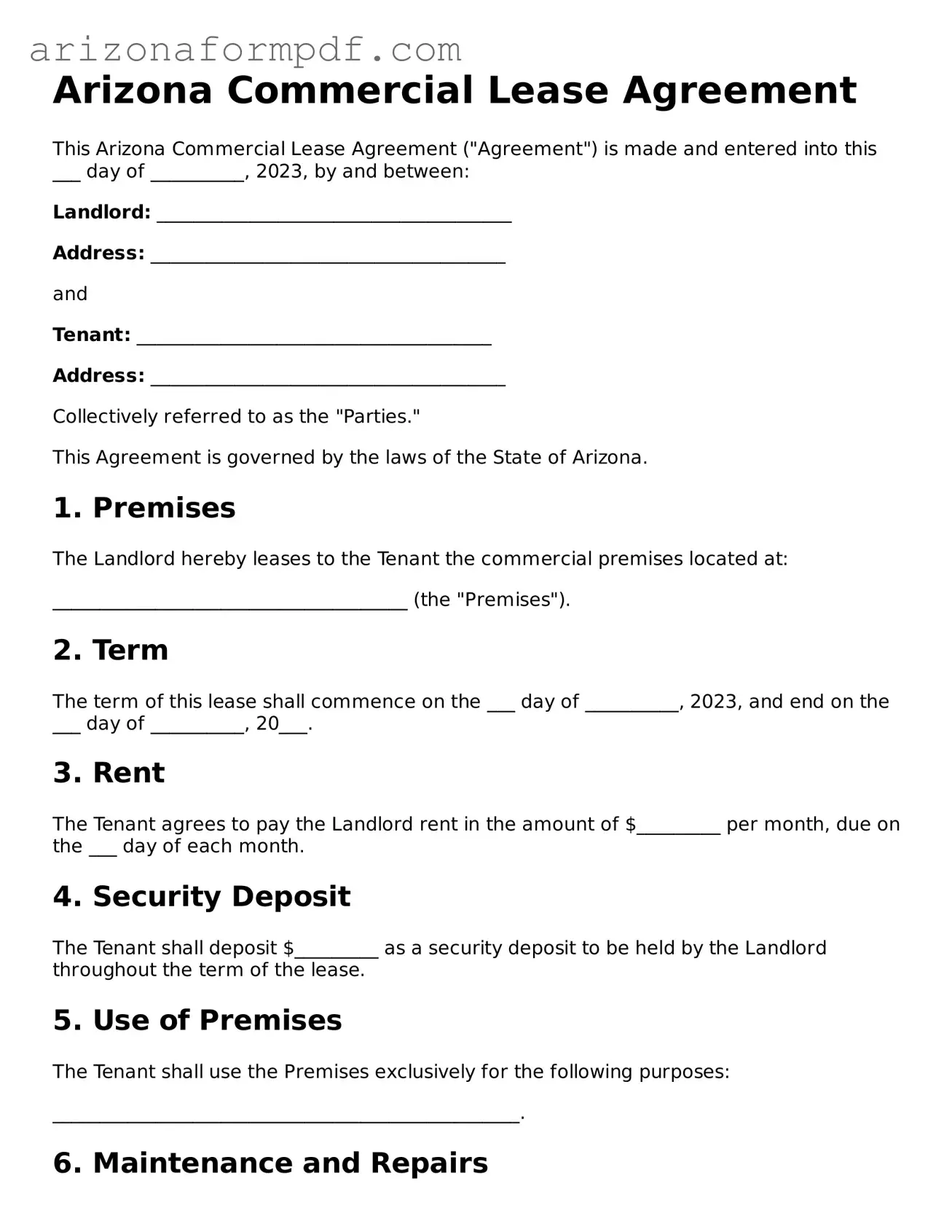Arizona Commercial Lease Agreement
This Arizona Commercial Lease Agreement ("Agreement") is made and entered into this ___ day of __________, 2023, by and between:
Landlord: ______________________________________
Address: ______________________________________
and
Tenant: ______________________________________
Address: ______________________________________
Collectively referred to as the "Parties."
This Agreement is governed by the laws of the State of Arizona.
1. Premises
The Landlord hereby leases to the Tenant the commercial premises located at:
______________________________________ (the "Premises").
2. Term
The term of this lease shall commence on the ___ day of __________, 2023, and end on the ___ day of __________, 20___.
3. Rent
The Tenant agrees to pay the Landlord rent in the amount of $_________ per month, due on the ___ day of each month.
4. Security Deposit
The Tenant shall deposit $_________ as a security deposit to be held by the Landlord throughout the term of the lease.
5. Use of Premises
The Tenant shall use the Premises exclusively for the following purposes:
__________________________________________________.
6. Maintenance and Repairs
The Tenant agrees to maintain the Premises in good condition and promptly notify the Landlord of any needed repairs.
7. Utilities
The Tenant shall be responsible for the payment of all utilities associated with the Premises, including but not limited to:
- Water
- Electricity
- Gas
- Internet
8. Alterations
Any alterations to the Premises require prior written consent from the Landlord.
9. Insurance
The Tenant shall obtain liability insurance covering the Premises and provide proof of such insurance to the Landlord.
10. Governing Law
This Agreement shall be construed in accordance with the laws of the State of Arizona.
11. Signatures
IN WITNESS WHEREOF, the Parties have executed this Agreement as of the day and year first above written.
____________________________________
Landlord Signature
____________________________________
Date
____________________________________
Tenant Signature
____________________________________
Date
